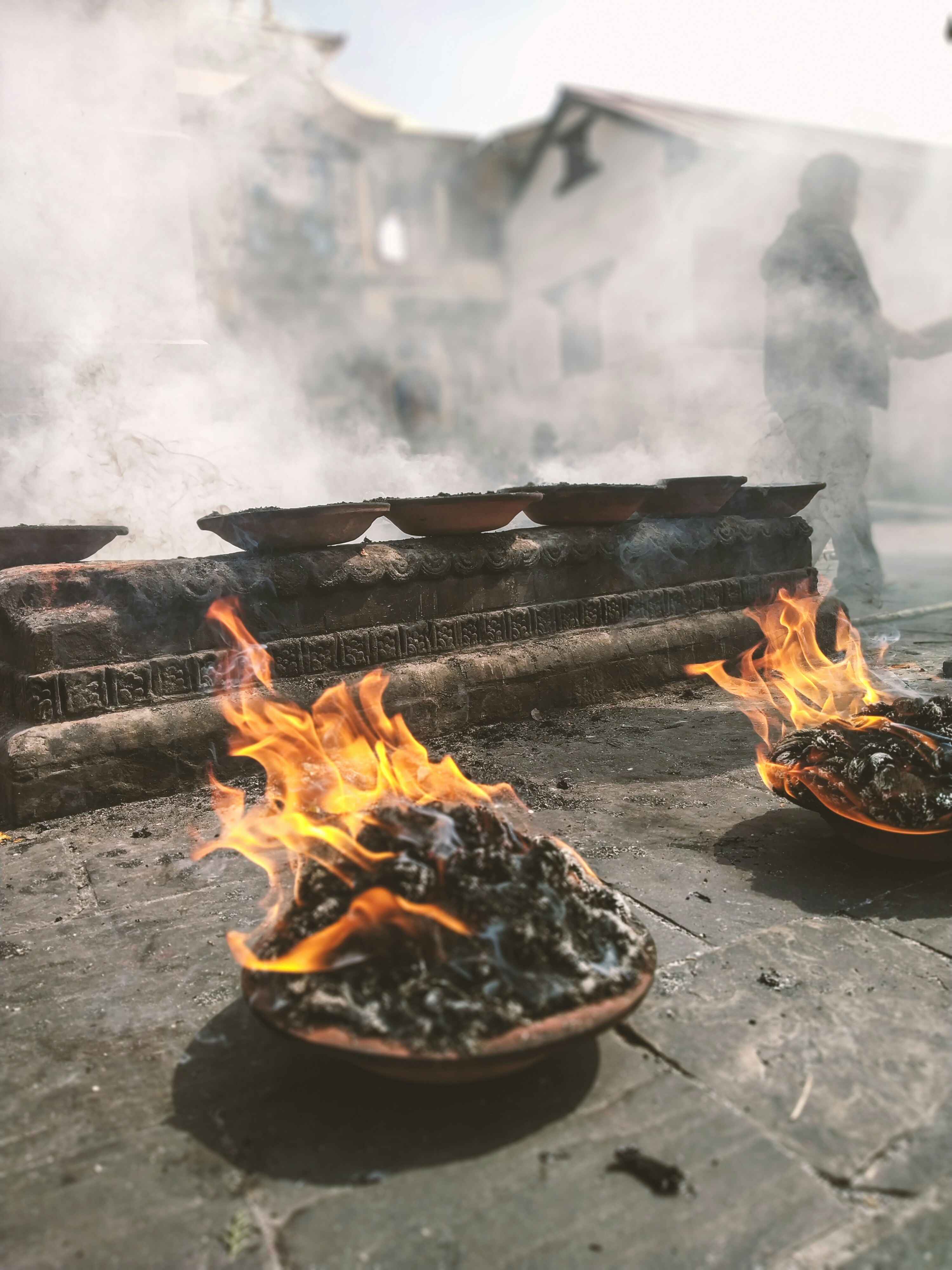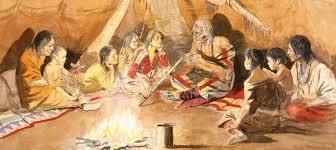Share this Article
Introduction: The Living Legacy of Nepali Craftsmanship
Nepal, a land of towering mountains and deep valleys, is not only renowned for its natural beauty but also for its rich cultural heritage. Among the many facets of Nepalese culture, traditional handicrafts and woodcarving occupy a special place, representing centuries of skill, devotion, and artistic expression. These crafts are more than mere objects; they are vessels of history, spirituality, and identity. From the bustling streets of Kathmandu to the remote villages of the Terai and the hills, handcrafted artifacts tell stories of generations of artisans who have honed their skills and passed them down through family lineages. The delicate patterns etched into wooden doors, windows, and household items reflect the intricate worldview of the Nepali people, blending art, religion, and everyday life.
Traditional handicrafts in Nepal encompass a wide range of artistic expressions, including pottery, metalwork, weaving, and especially woodcarving. Among these, woodcarving stands out for its complexity, historical significance, and spiritual symbolism. It has adorned the temples, palaces, and homes of the Kathmandu Valley for centuries, serving both decorative and sacred purposes. Each carved figure, be it a deity, a mythical creature, or a floral motif, reflects a combination of aesthetic sensibility and religious reverence, making Nepali woodcarving a cultural treasure recognized across the world.
This article delves into the history, techniques, regional variations, and ongoing challenges of traditional handicrafts and woodcarving in Nepal. It explores how these practices preserve the nation’s cultural identity and how modern influences are shaping their future. By examining the lives of artisans, the rituals associated with craftsmanship, and the role of handicrafts in everyday Nepali life, we aim to understand the enduring legacy of these timeless arts.
Historical Roots of Handicrafts in Nepal
Nepal’s handicraft traditions date back thousands of years, deeply intertwined with the evolution of its society, religion, and trade. Archaeological evidence and historical texts reveal that artisans in the Kathmandu Valley were creating sophisticated objects as early as the Licchavi period (circa 400–750 CE). These early crafts were influenced by a mix of indigenous techniques and cultural exchanges with neighboring regions, including India and Tibet. Woodcarving, in particular, developed as both a functional and sacred art form, adorning temples, shrines, palaces, and homes with intricate designs.
During the Malla period (12th–18th century), handicrafts and woodcarving reached unprecedented heights. This era, known as the golden age of art and architecture in Nepal, saw the construction of elaborate palaces, pagoda-style temples, and ceremonial objects that demanded the expertise of skilled artisans. Guilds were established to regulate craftsmanship, ensuring quality, training apprentices, and preserving stylistic traditions. Woodcarvers, in particular, were highly respected, as their work was integral to religious rituals and civic identity. The intricate struts, windows, and doors carved during this time continue to awe visitors and scholars alike, standing as a testament to the artistic brilliance of Nepali artisans.
Handicrafts were not limited to wood. Metalwork, pottery, weaving, and stone carving flourished alongside woodcarving, often complementing each other. Artisans employed natural materials available in the region, creating objects that were durable, functional, and artistically significant. The craft traditions were closely tied to religious and cultural practices, with artisans often following ritualistic methods believed to imbue the objects with spiritual power. This deep connection between art and faith ensured the survival and reverence of handicrafts through centuries of social and political change.
The Art of Woodcarving: Techniques and Symbolism
Nepali woodcarving is renowned for its meticulous detail and symbolic richness. Artisans employ a variety of techniques, from relief carving to openwork designs, often combining geometric patterns with depictions of deities, animals, and mythological figures. Tools traditionally include chisels, knives, and mallets, each crafted to suit specific carving needs. The selection of wood is equally crucial, with species such as sal, teak, and rosewood preferred for their durability, texture, and workability.
Carving is more than an artistic endeavor; it is a spiritual practice. Many artisans follow ritualistic preparations before beginning a project, such as invoking blessings or performing small ceremonies to honor the spirits believed to inhabit the wood. The motifs carved into temple doors, windows, and struts often depict Hindu and Buddhist iconography, symbolizing protection, prosperity, and divine presence. Even secular items, such as chests, furniture, and household utensils, are adorned with decorative patterns, reflecting the artisan’s dedication to beauty and craftsmanship.
The process of woodcarving is labor-intensive and demands patience. A single strut or window can take weeks or even months to complete, depending on its complexity. Mastery requires years of apprenticeship under experienced artisans, making the craft not only a form of art but a lifelong discipline. Each piece carries the signature style of the carver, creating a continuum of tradition that blends individual creativity with collective heritage.
Regional Variations in Handicrafts and Woodcarving
Nepal’s diverse geography and multi-ethnic population have given rise to a rich variety of handicraft traditions, each reflecting the cultural identity and environmental resources of the region. While the Kathmandu Valley is renowned for its intricate woodcarving and metalwork, other regions contribute unique styles, techniques, and materials that enrich the country’s artistic heritage.
In the Kathmandu Valley, encompassing Kathmandu, Bhaktapur, and Lalitpur, woodcarving reached its pinnacle during the Malla period. The valley’s artisans are known for their detailed windows, temple struts, doors, and palatial decorations. Each city developed a distinctive style: Bhaktapur is celebrated for its richly carved wooden windows with floral and mythical motifs, Lalitpur for its delicate temple struts and roof decorations, and Kathmandu for its intricate doors and palace carvings. The valley’s craftsmen also integrate religious iconography, with carvings of gods, goddesses, and protective figures serving both aesthetic and sacred purposes.
Moving to the Terai region, the flat plains bordering India, handicrafts take on different forms. The Terai’s artisanal traditions focus on pottery, bamboo work, and cloth weaving. Woodcarving exists here but is generally less ornate than in the Kathmandu Valley, often functional in nature, used for furniture, agricultural tools, and household items. The Terai’s crafts reflect both practical needs and Indian artistic influences due to historical trade and cultural interactions.
In the hill and mountain regions, such as Mustang, Dolpo, and the districts of western Nepal, handicrafts are shaped by isolation, natural resources, and Tibetan Buddhist influences. Carving and painting are integral to monasteries and ritual objects. The wood used here is often sourced locally, and motifs include Tibetan Buddhist iconography, prayer wheels, and intricate mandalas. Artisans in these regions also practice metalwork, creating ritual masks, statues, and jewelry that complement wooden carvings.
The cultural significance of these regional variations extends beyond aesthetics. Handicrafts serve as markers of identity, telling stories of a community’s history, beliefs, and values. They are integral to ceremonies, religious practices, and social rituals. In Kathmandu, for example, the carved wooden windows of Newar homes are not merely decorative—they indicate social status, family lineage, and adherence to cultural norms. In rural villages, handcrafted ritual objects play a central role in festivals, marriages, and religious rites, reinforcing communal bonds and spiritual devotion.
Regional differences also highlight the resilience and adaptability of Nepalese artisans. Despite varying environmental conditions, access to materials, and cultural influences, craftsmen maintain their traditions while infusing local aesthetics and techniques. This adaptability ensures that Nepali handicrafts remain dynamic, capable of evolving without losing their essential cultural essence.
Cultural Significance and Symbolism
Handicrafts and woodcarving in Nepal are deeply symbolic, often embodying spiritual beliefs, social values, and historical narratives. Temples, palaces, and homes are adorned with carvings and motifs that convey protection, prosperity, and divine favor. The depiction of deities, mythological animals, and sacred patterns is not mere decoration but a tangible expression of faith and worldview.
For instance, the ubiquitous “torana”, a carved wooden lintel above doorways, often features floral designs, deities, or auspicious symbols. Its presence is believed to safeguard the household and attract positive energy. Similarly, carved struts supporting temple roofs often depict protective figures or divine scenes, illustrating the confluence of art and religion. Each carving is carefully planned according to ritual guidelines, reinforcing the idea that craftsmanship is inseparable from spiritual life.
Handicrafts also reflect social and familial identity. In many Newar communities, commissioning a carved door or window was traditionally a matter of pride, signifying wealth, status, and adherence to cultural norms. Crafts were often passed down through generations, with families specializing in specific styles or techniques. This continuity fosters a sense of belonging and intergenerational connection, reinforcing cultural cohesion.
Moreover, the symbolism embedded in handicrafts serves educational and historical purposes. Carvings often depict scenes from epics, legends, and local folklore, teaching moral lessons, historical events, and religious stories to successive generations. In this way, handicrafts act as living textbooks, preserving knowledge and values that might otherwise be lost.
Challenges to Traditional Handicrafts in Nepal
Despite their rich history and cultural significance, traditional handicrafts and woodcarving in Nepal face numerous challenges that threaten their continuity. Rapid modernization, globalization, and shifting economic priorities have placed immense pressure on artisanal communities. Many young people, drawn by urban employment opportunities or higher-paying jobs abroad, are abandoning traditional crafts, leading to a decline in skilled practitioners. This generational gap risks the loss of intricate techniques that have been passed down over centuries.
The influx of mass-produced goods has further compounded these challenges. Cheaper, factory-made furniture, decor, and souvenirs often mimic traditional designs but lack the craftsmanship, spiritual significance, and durability of authentic handwork. This has diminished market demand for genuine handcrafted items, making it difficult for artisans to sustain livelihoods solely through traditional practices. The commercialization of handicrafts sometimes leads to compromises in quality or authenticity, eroding cultural integrity in the process.
Environmental factors also pose threats. Woodcarving relies on the availability of specific timber species such as sal, teak, and rosewood. Deforestation, habitat loss, and regulatory restrictions on timber harvesting have made high-quality wood scarce and expensive. Similarly, other handicraft materials, like natural dyes, bamboo, and traditional clays, are increasingly difficult to obtain due to environmental degradation or urban expansion.
Political instability and insufficient policy support have also hindered preservation efforts. While Nepal’s cultural heritage is recognized as nationally significant, there is often a lack of systematic programs to train new artisans, protect intellectual property, and provide sustainable economic support. Many artisan communities operate independently, relying on local markets or tourism, making them vulnerable to fluctuations in demand, natural disasters, and economic crises.
Preservation Efforts and Revival Initiatives
Recognizing the urgency to safeguard these traditions, various organizations, communities, and government bodies have initiated efforts to preserve and revive traditional handicrafts and woodcarving. Cultural institutions in the Kathmandu Valley, such as the Patan Museum and National Museum of Nepal, actively document and exhibit historical artifacts, raising awareness of the nation’s artisanal heritage. Workshops, exhibitions, and training programs aim to equip younger generations with traditional skills while introducing modern techniques to adapt to contemporary markets.
Community-led initiatives also play a vital role. Local artisan cooperatives and guilds, often rooted in centuries-old traditions, provide mentorship, collective marketing, and access to resources. These organizations help sustain families dependent on craft-making while promoting high-quality standards and cultural authenticity. Festivals, fairs, and cultural events, such as the Bhaktapur Woodcarving Festival, showcase artisan work, encourage public appreciation, and generate economic support through sales and tourism.
International recognition has further contributed to preservation. UNESCO has acknowledged aspects of Nepali cultural heritage, including traditional craftsmanship, as globally significant. International NGOs and trade organizations provide technical support, funding, and platforms for exporting artisanal products, creating new markets while emphasizing sustainability and fair trade.
Modern technology has also become an ally. Digital platforms allow artisans to showcase and sell products online, connecting them with global audiences while retaining traditional methods. Online tutorials and virtual workshops help transmit knowledge to distant communities, bridging the gap created by urban migration and generational shifts.
Balancing Tradition and Innovation
Preserving Nepalese handicrafts requires a delicate balance between maintaining traditional integrity and embracing innovation. While modern tools, designs, and marketing methods can increase visibility and income, it is crucial to ensure that the spiritual and cultural essence of the work is not diluted. Some artisans have successfully blended traditional motifs with contemporary furniture, decor, or fashion items, attracting younger customers while honoring ancestral techniques.
Education also plays a crucial role. Including craft training in school curricula, vocational institutes, and cultural programs ensures that future generations recognize the value of their heritage. By fostering pride in local traditions alongside modern entrepreneurial skills, Nepal can create a sustainable model for artisans to thrive in today’s economy.
The survival of Nepalese handicrafts and woodcarving ultimately depends on a collective commitment—from artisans, communities, governments, and global audiences—to preserve cultural identity while adapting to changing circumstances. When approached thoughtfully, this blend of preservation and innovation can secure a vibrant future for traditional arts, keeping Nepal’s heritage alive for centuries to come.
Modern Adaptations of Traditional Handicrafts
In the contemporary era, Nepalese handicrafts and woodcarving are undergoing a subtle yet meaningful transformation. While the core techniques remain rooted in tradition, artisans are experimenting with new designs, materials, and applications to meet modern tastes and market demands. Traditional motifs—such as lotus flowers, mythical creatures, and deities—are being integrated into functional items like furniture, home decor, jewelry, and fashion accessories. These adaptations allow craftsmen to appeal to younger, urban consumers and international buyers, expanding the reach of Nepali art beyond local markets.
Collaboration with designers, architects, and entrepreneurs has opened new avenues for innovation. Interior designers, for instance, incorporate carved wooden panels or traditional motifs into modern homes and commercial spaces, blending heritage aesthetics with contemporary architecture. Fashion designers have used patterns inspired by woodcarving and weaving in textiles, bags, and accessories, creating a fusion of craft and modern style. By reimagining traditional art for current lifestyles, artisans ensure that their work remains relevant without compromising cultural authenticity.
Global Influence and Recognition
Nepalese handicrafts have increasingly gained recognition on the global stage. International tourists, collectors, and art enthusiasts have developed a growing appreciation for handcrafted Nepalese products, particularly woodcarving and metalwork. Exhibitions in Europe, Asia, and North America showcase these arts, highlighting Nepal’s unique craftsmanship and cultural depth.
Global recognition has not only elevated the status of artisans but has also fostered economic opportunities. Handcrafted items fetch higher prices in foreign markets than locally produced, mass-manufactured goods. International partnerships and fair-trade networks help artisans access these markets, providing both financial sustainability and cultural validation. UNESCO recognition of aspects of Nepalese heritage, including the Kathmandu Valley’s architectural and craft traditions, has further amplified awareness, encouraging preservation and investment in artisanal communities.
Economic Impact of Handicrafts in Nepal
Handicrafts play a significant role in Nepal’s economy, contributing to employment, tourism, and export revenue. Artisanal villages, particularly in the Kathmandu Valley, support thousands of families whose livelihoods depend on craft-making. Handicraft production stimulates ancillary sectors, including raw material supply, transportation, and retail. The tourism industry also heavily relies on handicrafts as a cultural attraction, with tourists often seeking authentic souvenirs, handcrafted items, and decorative artifacts.
Crafts such as woodcarving, metalwork, weaving, and pottery provide income opportunities for marginalized communities, women, and youth. Community cooperatives and artisan guilds facilitate skill development, collective marketing, and financial support, empowering artisans while preserving cultural heritage. By valuing local crafts as economic assets, Nepal reinforces the connection between culture, identity, and sustainable development.
The Role of Technology and Modern Marketing
Technology has transformed how handicrafts are produced, marketed, and sold. Artisans now use digital tools to design patterns, manage inventory, and connect with global buyers. Social media platforms and e-commerce websites provide visibility, allowing artisans to showcase their work to audiences beyond Nepal. Online campaigns, virtual exhibitions, and collaborations with influencers have introduced traditional crafts to younger generations worldwide, fostering appreciation and demand.
Modern marketing also emphasizes storytelling, highlighting the history, cultural significance, and craftsmanship behind each item. This narrative approach not only increases the perceived value of products but also educates consumers about the heritage embedded in every piece. When artisans share their creative journey and spiritual inspiration, buyers form a deeper connection with the work, creating long-term economic and cultural benefits.
Ensuring Sustainability and Continuity
The future of Nepalese handicrafts and woodcarving depends on sustainable practices that preserve both the cultural heritage and the natural resources essential to these crafts. Sustainable timber management, the use of eco-friendly materials, and the promotion of renewable resources are vital to ensure that artisans can continue their work without depleting the environment. Training programs that teach sustainable techniques alongside traditional methods help future artisans maintain quality while protecting forests and other natural resources.
Community involvement is crucial for sustaining traditional craftsmanship. Local cooperatives, artisan guilds, and cultural organizations can provide mentorship, technical support, and collective bargaining power. By creating strong networks, artisans can access resources, share knowledge, and collectively navigate market challenges. Government policies that offer financial incentives, grants, and legal protections further strengthen these efforts, ensuring that cultural heritage is preserved alongside economic development.
Education and Knowledge Transfer
Education is a cornerstone for safeguarding Nepal’s artisanal legacy. Apprenticeships, vocational training centers, and craft schools play an essential role in transferring knowledge to the younger generation. Incorporating traditional handicrafts into school curricula and community workshops fosters awareness, pride, and practical skills, inspiring youth to pursue craftsmanship as a viable career.
Documenting techniques, patterns, and oral histories is another critical strategy. By creating detailed records of woodcarving methods, design principles, and ritual practices, Nepal can preserve invaluable knowledge for future generations. Digital archives, online tutorials, and interactive learning platforms allow wider access, ensuring that traditional skills are not lost despite urban migration or modernization pressures.
Adapting to Modern Markets
The integration of tradition with modern market demands is essential for the survival of handicrafts. Artisans are increasingly designing products that cater to contemporary aesthetics while retaining traditional motifs, ensuring relevance in both local and global markets. Collaborations with designers, architects, and entrepreneurs expand opportunities for creative adaptation, turning cultural heritage into functional, marketable art.
Innovation does not mean abandoning tradition. The challenge lies in balancing authenticity with practicality. By selectively adapting techniques and designs, artisans can produce items that appeal to modern consumers without diluting the spiritual and cultural significance of their craft. This strategy not only sustains income but also enhances the global appreciation of Nepalese craftsmanship.
The Role of Cultural Tourism
Cultural tourism offers a powerful avenue to sustain traditional handicrafts and woodcarving. Visitors seeking authentic experiences are drawn to artisan villages, workshops, and markets, where they can witness craftsmanship firsthand and purchase handmade products. Tourism generates revenue, encourages local engagement, and raises awareness about the cultural value of handicrafts. Festivals, exhibitions, and craft fairs further highlight artisanal talent, fostering community pride and economic sustainability.
By combining tourism with education and skill development, Nepal can create an ecosystem in which handicrafts are both economically viable and culturally respected. This integrated approach ensures that artisans are valued not only for their products but also as bearers of intangible cultural heritage.
Vision for the Future
The future of traditional handicrafts and woodcarving in Nepal is a vision of continuity, innovation, and pride. By preserving ancestral skills, adapting to modern markets, and promoting sustainable practices, Nepal can maintain its artisanal legacy for generations to come. Artisans, communities, governments, and international supporters must collaborate to safeguard cultural heritage while fostering economic resilience.
In this vision, each carved wooden strut, intricately woven textile, and handcrafted artifact stands as a testament to Nepal’s rich history, spiritual depth, and creative genius. By valuing both the tangible and intangible aspects of handicrafts, Nepal ensures that its heritage remains a living, evolving force—a bridge between past, present, and future.
Conclusion: Preserving Nepal’s Artistic Heritage
Traditional handicrafts and woodcarving are more than mere artistic expressions—they are the living embodiment of Nepal’s history, spirituality, and cultural identity. From the intricately carved windows of Bhaktapur to the sacred temple struts of Lalitpur, these crafts reflect centuries of skill, devotion, and communal memory. They connect past generations with the present, telling stories of faith, artistry, and everyday life while preserving the nation’s intangible heritage.
Despite facing significant challenges, including urban migration, mass production, and environmental pressures, Nepalese artisans continue to innovate and adapt. Through education, sustainable practices, community support, and modern marketing, the tradition of handicrafts is finding new relevance in contemporary life. Cultural tourism, global recognition, and digital platforms further provide opportunities for artisans to sustain their livelihoods while sharing Nepalese culture with the world.
Preserving these crafts requires a collective effort—artisans, communities, governments, and consumers all play a role in ensuring that traditional skills are respected, nurtured, and passed down. By balancing authenticity with innovation, Nepal can safeguard its rich artistic heritage while embracing the possibilities of the modern era. The continued vitality of handicrafts and woodcarving is not only a testament to the creativity and resilience of Nepalese artisans but also a promise that Nepal’s cultural soul will endure for generations to come.
Categories:
Photography & Arts
Tags:
architecture
,
Traditional







